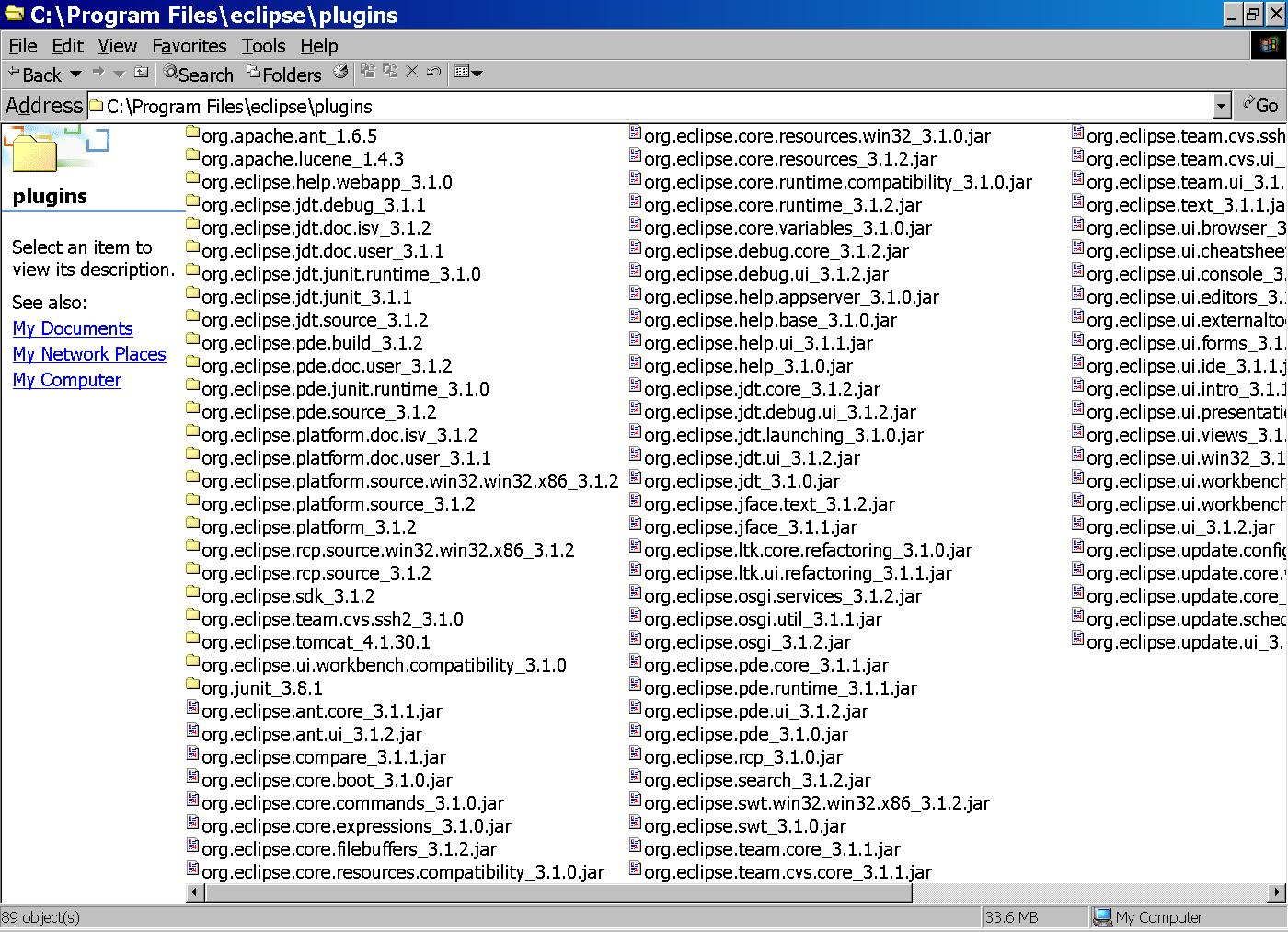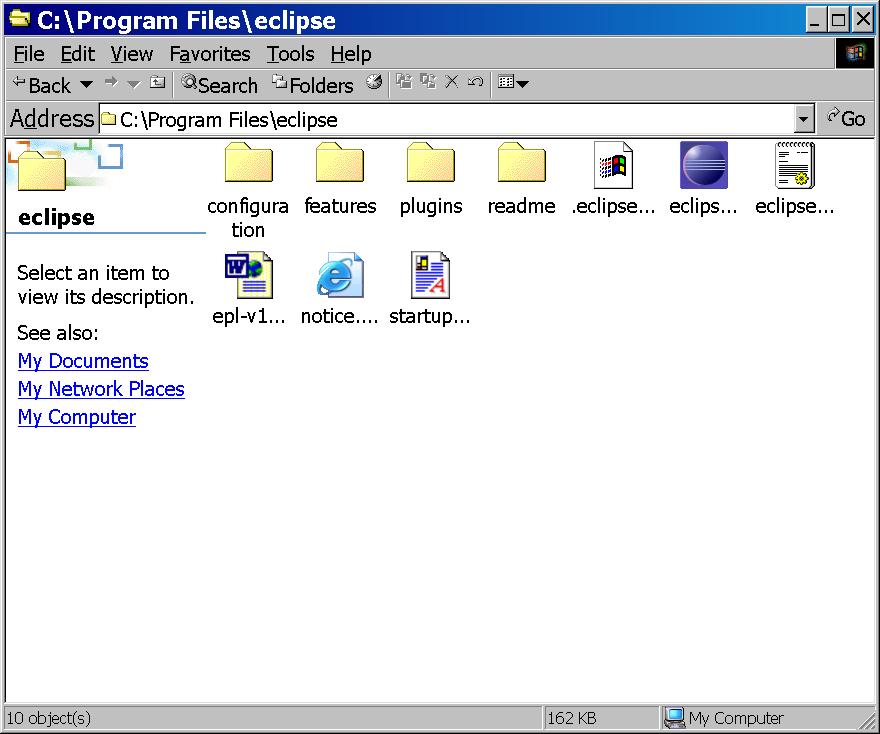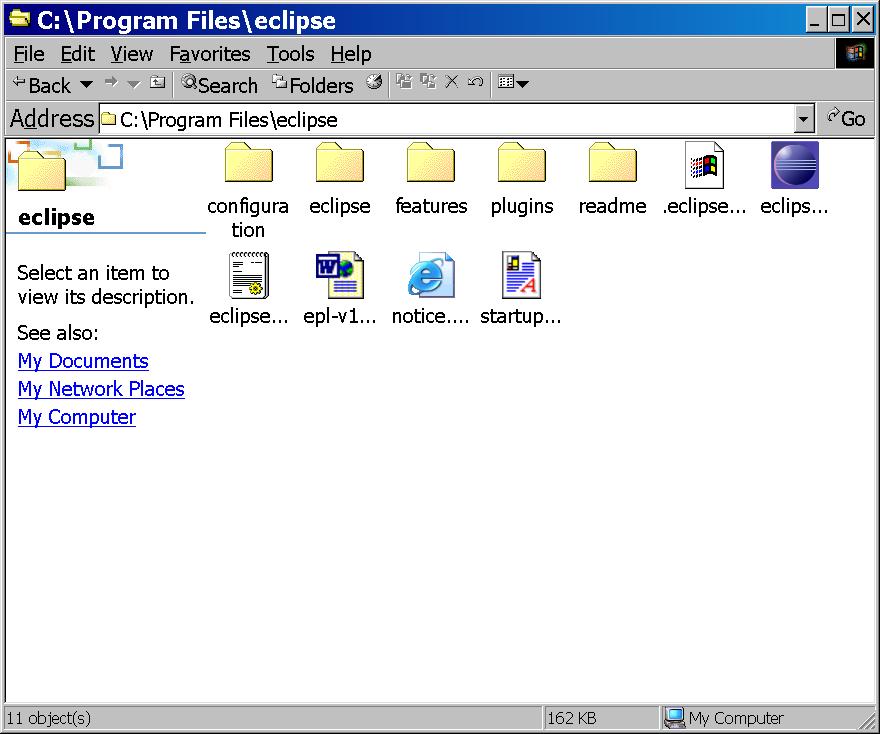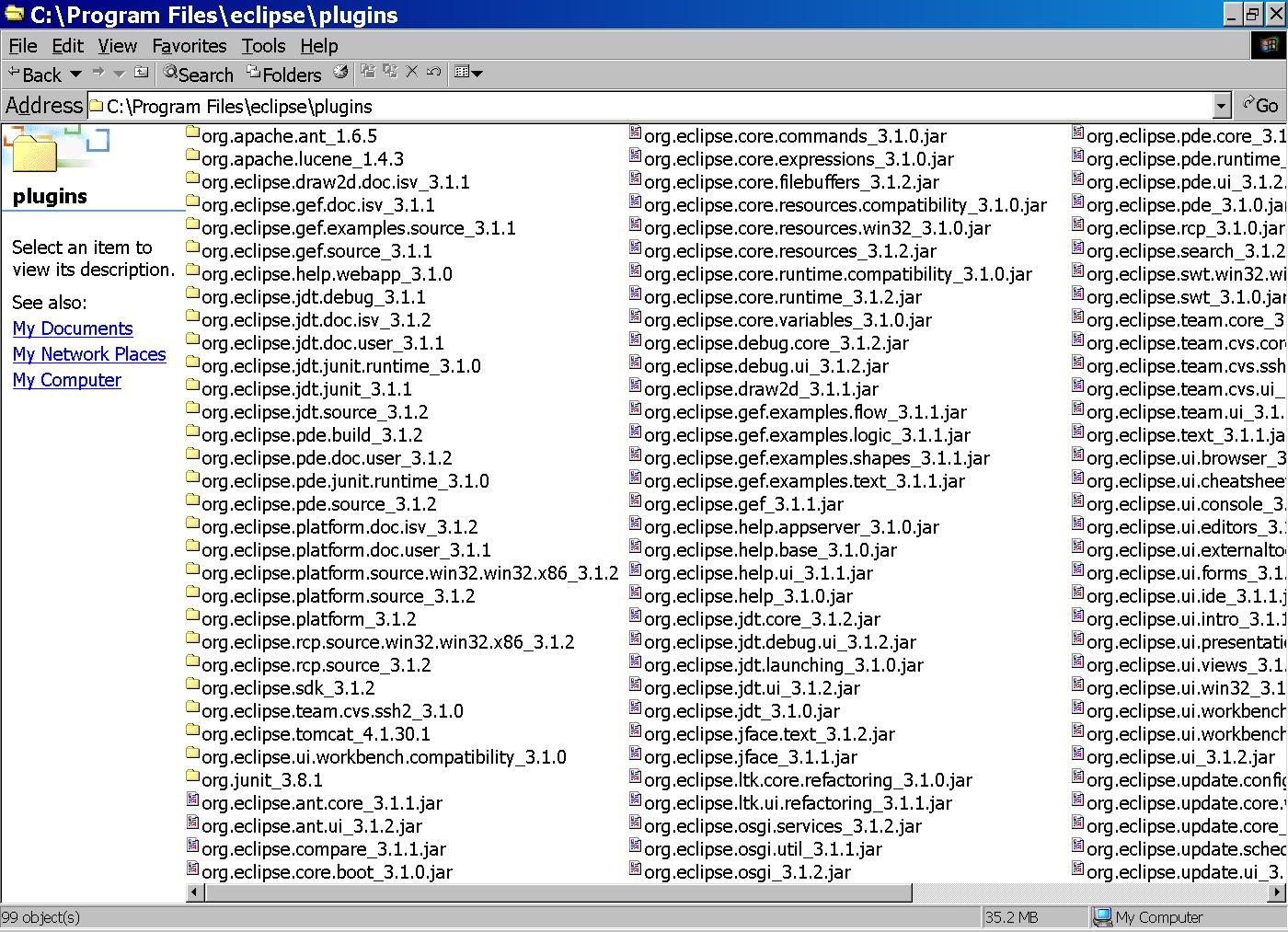
Note: These instructions were last updated on 2/5/06. If you completed your installation of Eclipse & GEF before that, you will need to go into C:\ProgramFiles and delete the eclipse folder. Yes, delete, send the entire thing to the recycle bin. You can then skip over Installing JDK and go to the part of the Eclipse instructions after you have downloaded the file and unzip it again. Your shortcut will still work, so you do not have to delete that. Continue the instructions from that point. If you have already downloaded GEF, you only need to unzip that again. Please note the addition of screen shots to these directions so that you can check your progress.
In order to have the total environment at home as you would in the Baldy 21lab, you will need to follow all of these instructions for installation exactly. Failure to follow even one step can result in your installation not working correctly and you not being able to work on your projects from home. If the installation does not work for you, our first tech-support response will be to uninstall everything and try again from scratch following each step of the directions as they are written. Please note, this is not a process you should begin at 11pm the night your project is due.
Installing JDK
1. Go to the Sun's JDK download page:
http://java.sun.com/j2se/1.5.0/download.jsp. You should select to download
the JDK 5.0 Update 4 (or later) without any additional programs (like NetBeans).
Careful that you download the JDK and not the JRE. You also do not need any J2EE
technology.
If you use a Mac running OS X: You can download JDK 5.0 from
http://www.apple.com/support/downloads/java2se50release1.html
Note that the Green plug-in requires JDK 5.0 (also called jdk 1.5.0),
and will not work with JDK 1.4 or earlier.
2. You will need to agree to the licensing agreement.
3. Under Windows platform, you want to select the "Windows
Offline Installation" and click the link to begin
downloading.
4. When the file download dialog box comes up, choose to Save
the file. A save dialog box will appear and you should select to
save the file in C:\. Click on the Save button to begin the
download process. A status window will appear to tell you
approximately how long this will take. On a cable modem it took
about 5 minutes, but that may vary depending on service/time of
day.
5. When finished downloading, there should be an option activated to
Run the file. You should select this option and the automatic
installation program will take over.
6. You will need to agree to the licensing agreement again and then
hit "Next".
7. Another screen will appear asking you about customizing the
install. You will use the default install, so simply hit
"Next" again.
8. Installation will now be beginning on your machine and you will see
a status bar appear to let you see progress.
9. Next you will be installing the Java Runtime Environment.
Again you want the default installation, so simply hit
"Next".
10. You will be prompted as to which browser you want to
register the Java plug-in, choose whatever browser you use most often
and hit "Next".
11. The JRE will install and another status bar will appear.
12. You should then click Finish.
13. You MUST then click on the
"Installation Instructions"
link on the download page. Doing so will take you to a page on which you need
to select your operating system. Once you've done this you will get to the
installation instructions. You MUST follow the directions for changing
your PATH variable, which is step 5 of the instructions. You have already
completed steps 1-4 when you ran the installer. Find your version of Windows
and set the variable accordingly.
Installing Eclipse
1. Go to the Eclipse download page:
http://download.eclipse.org/downloads
2. Under the Boldface section heading Build Type, select the link for 3.1 on
the line that reads "Latest Release".
3. This will take you to another page with the title "Release Build 3.1".
In the section named "Eclipse SDK", there is a line for Windows, select the
link in the download column that reads "eclipse-SDK-3.1-win32.zip". The
remainder of these instructions are assuming your operating system is Windows.
If you are using another operating system, the file/directory names may be different.
4. Clicking on the link takes you to the "eclipse downloads" site. You
will now need to select a site to download from. You can use the site University
at Buffalo CSE Department under the North America heading if you
wish. You will be able to download from any of the sites listed.
The difference is that some may be faster than others and some might not be
working at a particular time, so there are plenty to choose from.
5. When the file download dialog box comes up, choose to Save the file.
A save dialog box will appear and you should select to save the file in C:\Program
Files. Click on the Save button to begin the download process. A
status window will appear to tell you approximately how long this will take.
On a cable modem it took between 5-10 minutes, but that may vary depending on
service/time of day.
6. When finished downloading, you should unzip (decompress) the file to C:\Program
Files.
7. You will want to create a shortcut to Eclipse in Windows. Using My
Computer, navigate into C:\Program Files\eclipse\ Locate the file "eclipse.exe".
Right-click on the file and drag it to the location where you'd like the shortcut
to appear (the desktop might be a good choice). After releasing the mouse button,
a menu will appear; select "Create Shortcuts Here".
Your eclipse file should look like this:

Inside the Features directory you should see the following at this point:

Inside the Plugins directory, you should see the following at this point:

Installing GEF
1. Go to the GEF project download page: http://download.eclipse.org/tools/gef/downloads.
2. Under the section named Latest Downloads, select the link for 3.1 on the
line that reads "Latest Release".
3. This will take you to another page with the title "Release Build 3.1".
In the section named "All (SDK + Examples)", there is a line for All (all platforms),
select the link in the download column that reads "GEF-ALL-3.1.zip". The
remainder of these instructions are assuming your operating system is Windows.
If you are using another operating system, the file/directory names may be different.
4. Clicking on the link takes you to the "eclipse downloads" site. You
will now need to select a site to download from. You can use the site University
at Buffalo CSE Department under the North America heading if you
wish. You will be able to download from any of the sites listed.
The difference is that some may be faster than others and some might not be
working at a particular time, so there are plenty to choose from.
5. When the file download dialog box comes up, choose to Save the file.
A save dialog box will appear and you should select to save the file in C:\Program
Files. Click on the Save button to begin the download process. A
status window will appear to tell you approximately how long this will take.
This file took much less time to download than the eclipse file, but that may
vary depending on service/time of day.
6. When finished downloading, you should unzip (decompress) the file to C:\Program
Files. You will not see any changes to C:\Program Files with this install as
GEF installs its programs into the proper eclipse directories.
After you install GEF, this is what your eclipse directory will look like:

WARNING: If you eclipse directory looks like this, you
have installed GEF in the wrong place. Note the key difference here is the additional
directory named Eclipse.

OK - So, you might have screwed it up - what do you do? It is actually simple. You have two choices:
1) Delete the eclipse directory. Reread the directions and follow them. Note that it says to unzip to C:\Program Files
2) Go into the eclipse directory. You will find directories named Features and Plugins. Move the files from those directories up one level into the Features and Plugins directories that were initially created when you installed Eclipse.
You will know it is correct if your C:\Program Files\eclipse\Features directory looks like this after installing GEF:

And you C:\Program Files\eclipse\Plugins directory looks like this:

Installing Green.